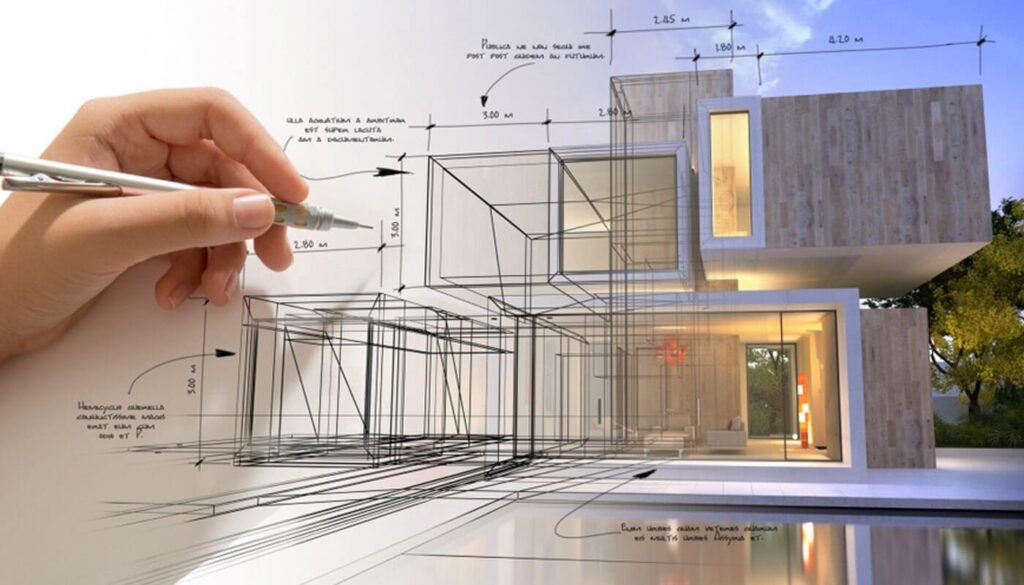Comprehending the Collaborative Process In Between Designers and Designers in Modern Construction Projects
The joint process in between engineers and engineers is essential in modern-day construction projects, as it integrates design intent with engineering expediency. Checking out these dynamics exposes insights that can substantially affect job end results and general sector criteria.
The Value of Collaboration
The collaborative synergy in between designers and engineers is vital for the successful realization of any construction project. This partnership brings with each other distinct knowledge and perspectives, allowing the integration of ingenious design with sensible engineering services. By interacting, designers and designers can make sure that a task not only satisfies aesthetic and useful demands but also abides by safety, sustainability, and budgetary constraints.
Cooperation cultivates a common vision, promoting the placement of objectives and expectations from the outset. This alignment is vital in resolving prospective difficulties and mitigating dangers that could occur during the job lifecycle. A joint approach permits for the effective allotment of resources, enhancing both time and price.
The importance of partnership encompasses the iterative process of design and construction, where responses from engineers can inform architectural decisions, causing even more practical and sustainable styles. Conversely, engineers can inspire designers to think creatively concerning how to achieve structural stability without endangering creative intent. Inevitably, the collective relationship between architects and engineers is not simply beneficial; it is essential to the creation of top notch, practical, and cutting-edge constructed atmospheres that meet the needs of society.
Interaction Strategies and Tools
Reliable interaction techniques and tools are important for fostering collaboration between architects and designers throughout the project lifecycle. Establishing clear channels of interaction is necessary to ensure that all employee are straightened with task goals, timelines, and obligations. Regular conferences, both in-person and digital, provide chances for stakeholders to discuss development, address issues, and make informed decisions.
Utilizing task management software application, such as BIM (Building Details Modeling) systems, boosts cooperation by making it possible for real-time sharing of design alterations and technological requirements. These tools promote openness, permitting architects and designers to picture modifications and assess their influence on the overall project.

Shared Goals and Project Vision

Establishing shared objectives includes open dialogue and an extensive understanding of each discipline's contributions. pop over to this site Engineers commonly focus on style intent, spatial partnerships, and user experience, while designers highlight structural honesty, systems performance, and compliance with regulations (cda architects). When these perspectives are lined up, the result is a natural job that follows both innovative ambitions and technological expediency
Additionally, a distinct project vision fosters liability amongst team participants, urging each individual to take possession of their duty in attaining the desired result. Normal check-ins and collective workshops can additionally enhance this dedication, permitting modifications to be made as the job progresses. Ultimately, a common vision not only boosts team effort however additionally raises the quality of the last deliverable, resulting in effective project completion.
The Role of Modern Technology
Leveraging technology has ended up being important in additional info boosting cooperation in between engineers and designers. Structure Details Modeling (BIM) stands out as a pivotal technology, allowing both architects and designers to produce in-depth 3D versions that encapsulate design intent and structural integrity.
Moreover, cloud-based systems allow seamless collaboration, allowing project stakeholders to gain access to and update project information from anywhere. This promotes a culture of openness and accountability, as modifications can be tracked and examined in real-time. In addition, mobile applications further boost interaction, giving on-site groups with instant access to project specs and updates.
Emerging technologies such as expert system and equipment discovering are likewise beginning to contribute in predictive evaluation, helping groups determine potential issues prior to they develop. Ultimately, the function of modern technology in architecture-engineering collaboration not just boosts workflow effectiveness yet also boosts innovation, causing more successful job results. By welcoming these technical improvements, architects and engineers can make sure a more natural and efficient collaborative process throughout the construction lifecycle.
Study in Effective Partnerships
Many instance studies show the profound impact of efficient collaborations between designers and designers on project results. One remarkable instance is the collaboration on the High Line in New York City City, where landscape architects, engineers, and city organizers worked together to transform a deserted rail line right into a lively public park. This multidisciplinary approach not only improved the visual high quality yet also made certain structural security and ecological sustainability.
One more exemplary instance is the style and building of the Sydney Music Hall. The partnership between designer JÃ ¸ registered nurse Utzon and structural engineer Ove Arup exhibited ingenious problem-solving. Their collaboration enabled for the legendary shell-like style while addressing intricate engineering obstacles, eventually leading to a timeless architectural masterpiece.
The Burj Khalifa in Dubai even more demonstrates the importance of joint initiatives. cda architects. The assimilation of architecture and design competence enabled the Discover More task team to attain unprecedented heights while sticking to security regulations and visual vision
These instances underscore the relevance of interaction, count on, and shared objectives. In today's complex building setting, such partnerships are necessary to navigating difficulties and delivering projects that satisfy both useful and visionary objectives.
Conclusion
In conclusion, the partnership between engineers and engineers is essential for the success of modern-day construction tasks. Efficient interaction strategies, a common job vision, and the integration of sophisticated modern technologies are crucial components that promote this collaboration. By promoting a society of liability and leveraging devices such as Structure Info Modeling (BIM), teams can browse job complexities, making certain that aesthetic, functional, and sustainability objectives are accomplished. Inevitably, this harmony brings about cutting-edge and successful project results.